Activists: Fed Has Power to Spur Recovery in Poor Communities
The Charlotte Post - March 6, 2015, by Herbert White - America’s economy may be in recovery, but Simone McCray can’t see it.
McCray works at a Charlotte warehouse where she earns $8.10 an...
The Charlotte Post - March 6, 2015, by Herbert White - America’s economy may be in recovery, but Simone McCray can’t see it.
McCray works at a Charlotte warehouse where she earns $8.10 an hour and lives with family to stretch her budget. A 2010 UNC Charlotte graduate with a degree in psychology, she has yet to land a job in that field.
“You don’t think you’re going to make $8.10 when you go to college,” she said. “That is not what they tell you.”More Americans are working than before the Great Recession of 2008, but African Americans are lagging. Figures released by the U.S. Department of Labor Friday showed the national unemployment rate fell to 5.5 percent in February, an improvement over the previous month.“With another strong employment report, we have now seen 12 straight months of private-sector job gains above 200,000 -- the first time that has happened since 1977,” said Jason Furman, chairman of the Council of Economic Advisers. “Moreover, 2014 was the best year for job growth since the late 1990s and 2015 has continued at this pace. But additional steps are needed to continue strengthening wages for the middle class.”But for African Americans, the jobless rate is double that of whites and the wage gap between the ethnic groups is getting wider.The Federal Reserve, which sets national policy on interest rates, is debating whether to boost the rate as a hedge against inflation. Progressive activists, however, are pushing the Fed to hold the line, arguing low rates will spur a jobs rebound, especially for low-income Americans.“Don’t put any brakes on the economic recovery,” said Pat McCoy, director of Action NC, which held a press conference Thursday to press the Fed. “Not only has it not yet been a full recovery, but in community of color, particularly in the African American community, unemployment rates, underemployment rates remain extremely high.”A study authored by the Center For Popular Democracy found that women and people of color are more likely to struggle to find work that pays a living wage. African Americans are especially hard hit with unemployment rates double the nation as a whole and plummeting wages.“Creating a strong American economy must include prioritizing a genuine recovery for the African American community,” the report summarizes.McCray wants to get in on the recovery. Saddled with debt from student loans, she’s looking for work that will allow her to meet financial obligations. Until then, she’s struggling to make ends meet.“My student loans are going to start going back into repayment and you have to have a way to repay them,” she said. “With jobs that are just above minimum wage, it’s kind of hard to stay afloat and pay your student loans, so you have to stay with family longer and not be out on your own and be independent sooner.”The Fed can help, activists insist, by resisting calls to raise interest rates. Corporate America and conservatives are pushing for an increase to prevent inflation, which is the simultaneous increase in consumer prices and devaluation of currency.“We need to continue to stimulate the economy through low-interest rates in order to serve these communities that need recovery,” McCoy said.As the Fed wrestle with the pros and cons of raising rates, Americans struggling to find work with a living wage are yet to be part of the nation’s limited recovery. Without a robust economic program, millions will be left out.“Only by pursuing genuine full employment will the Fed ensure that the recovery reaches Main Street and Martin Luther King Boulevard – and communities of working people throughout the country,” the CPD report’s authors wrote. “As the Fed makes crucial monetary policy decisions in the months and years to come, it must ensure that all communities can share in the prosperity of a functional economy.”
Source
Would independent prosecutors make police shooting investigations fairer?

Would independent prosecutors make police shooting investigations fairer?
Critics say the close connections between prosecutors and local police leads to unjust decisions not to prosecute officers following officer-involved shootings.
The absence of indictments...
Critics say the close connections between prosecutors and local police leads to unjust decisions not to prosecute officers following officer-involved shootings.
The absence of indictments of police officers in shooting deaths – especially in high-profile cases like the deaths of Michael Brown in Ferguson and Tamir Rice in Cleveland – is raising questions about the fairness of using local prosecutors to investigate police officers with whom they may have close ties.
Critics say the close working relationships between local prosecutors and law enforcement injects a bias into investigations of shootings and other deaths at the hands of police. A solution, some suggest, would be to use independent prosecutors to investigate charges of wrong-doing by police officers.
The investigation into the death of Alton Sterling in Baton Rouge, La., offers one example of the closeness often seen between prosecutors and police departments. East Baton Rouge District Attorney Hillar Moore recused himself from the investigation, as he had worked closely with both police-officer parents of one of the officers involved in the shooting.
When a police officer is involved in a shooting, often the officer's own police department opens an internal investigation into the incident. In some cases, says Walter Katz, an independent police auditor of the city of San Jose, Calif., who has studied investigations of police use of lethal force, there is evidence that suggests the investigator's close relationship to the officer can lead to a lack of objectivity.
"That can be amplified when also the local prosecuting agency is the agency that reviews to decide whether or not to file criminal charges against a police officer," Mr. Katz tells The Christian Science Monitor. "In smaller jurisdictions ... they're going to have a close working relationship, so it creates the potential impression that it's not an arm's length review of the use of force."
The scarcity of indictments in a variety of high-profile shootings has increased scrutiny of officer prosecutions by local authorities. The prosecutors in both the Tamir Rice case in Cleveland and the Michael Brown case in Ferguson said they believed the officers involved had acted legally. Both were accused of not presenting a fair review of possible charges to the grand juries, as Ari Melber, MSNBC’s chief legal correspondent, explained in The Washington Post.
The problem of officer-involved shootings of blacks wouldn't be solved with independent prosecutors, Marbre Stahly-Butts, the deputy director of racial justice for the Center for Popular Democracy, a progressive advocacy organization, tells the Monitor. But "certainly accountability is an essential step that needs to happen," she says.
"We have the common sense that asking prosecutors who work everyday with police and depend on police for their cases, to then be objective in prosecuting them, is just not reasonable," Ms. Stahly-Butts says.
Local advocates are working to address these issues, Stahly-Butts says, especially in St. Louis and New York, where it has contributed to the passage of an executive order ensuring independent prosecutors.
On the federal level, Congressman Steve Cohen (D) of Tennessee is sponsoring a bill that would withhold federal funding from law enforcement unless the use of independent prosecutors to address instances of deadly force by police is instituted.
"There's no good reason not to have independent prosecutors," he tells the Monitor. "If you have the prosecutors who work with the law enforcement agency, which they do hand-in-glove to investigate cases and present cases, there is... an appearance of, if not outright, impropriety."
This can limit the citizenry's faith in the justice system, especially if no charges are brought against the officers, Representative Cohen says. On the flip side, when local prosecutors do bring charges, police can react negatively. After Baltimore State's Attorney Marilyn J. Mosby brought charges against officers in the death of Freddie Gray, some believe there was a work slowdown among Baltimore Police, which police officials denied, the Baltimore Sun reported. This hurts the entire community, Cohen says.
The bill, introduced in October 2015, has 80 co-sponsors as of Wednesday morning. Several states have made moves to implement independent prosecutors, including Connecticut and New York. Cohen says it is important to set a nation-wide standard, but House Judiciary Chairman Rep. Bob Goodlatte (R) of Virginia has not yet scheduled a hearing.
The bill is opposed by the National Association of Police Organizations, a law enforcement advocacy group. The organization's executive director, William Johnson, wrote a letter to Cohen expressing fears that officers would face "a great deal of pressure" if investigated by independent prosecutors, The Hill reported.
"There is a risk that decisions to prosecute would be made based on politics, not on the law and admissible evidence," Johnson wrote. "NAPO is concerned that an officer would be indicted, even if he/she did nothing wrong."
Johnson did not respond to requests for comment from the Monitor.
Cohen says local law enforcement may oppose his bill because they benefit from the current system and may be "getting home cooking".
"That's not what justice is about," he says. "All games should be on neutral courts."
By AIDAN QUIGLEY
Source
Toys 'R' Us owners will hand out $20 million severance to employees
The fund was set up following negotiations between the private equity firms and various public interest groups that organized the employees, including Organization United for Respect, Private...
The fund was set up following negotiations between the private equity firms and various public interest groups that organized the employees, including Organization United for Respect, Private Equity Stakeholder Project and Center for Popular Democracy. "This Fund begins to ensure the hard-working people who spent their lives building Toys 'R' Us and making children happy are not left out in the cold," said Marilyn Muniz, a New York-based Toys "R" employee for nearly 20 years.
Read the full article here.
Why Recent Stock Volatility Shouldn’t Factor Into Interest-Rate Hikes
As a general principle, the Fed should not react to short-term movements in the financial markets. For one thing, the labor market is much more important to the lives of most Americans, and it is...
As a general principle, the Fed should not react to short-term movements in the financial markets. For one thing, the labor market is much more important to the lives of most Americans, and it is more relevant to the Fed’s mandate of securing maximum employment with inflation stability.
Then consider this: More than 80% of stock wealth in the U.S. is owned by the wealthiest 10% of Americans, and more than half of Americans own no stocks at all (either directly or through retirement or other accounts). In short, movements in the stock markets do not have much effect on the spending power of most U.S. households. That means that movements in the stock markets–especially short-term volatility that is likely to largely dissipate–provides little information about the overall state of economic health.
On the other hand, the labor market provides the vast majority of income to the vast majority of Americans. The middle fifth of households, for example, gets more than 80% of household income directly from the labor market (either cash wages or employer-provided benefits). Further, many additional sources of income such as pensions, Medicare, Social Security, unemployment insurance, or the Earned Income Tax Credit hinge on participation in the labor market. That’s why trends in the labor market are crucial to assessing the overall state of the economy–which is far from fully recovered from the Great Recession.
The clearest remaining weakness is wages. The current pace of hourly wage growth is roughly 2% to 2.5%. A healthy labor market that met the Fed’s overall price inflation target should be churning out wage increases of at least 3.5%. Further, a period of wage growth well above this is necessary for workers’ pay to reclaim some of the ground lost to corporate profits earlier in this recovery. Until wage growth starts moving durably toward the healthy 3.5% target, it’s too early for the Fed to begin raising rates.
This labor-market-based reasoning for keeping rates low should weigh much more heavily on Fed calculations about interest rates than recent stock activity. The only caveat: if one of the root causes of recent stock market declines–the slowdown in the Chinese economy–provides a new potential headwind to U.S. growth going forward.
But the case for keeping rates unchanged in September was dispositive last week, even before large declines in the stock markets. And any strong stock rally in the coming month shouldn’t make Fed officials feel fine about raising rates.
Source: Wall Street Journal
The CEO of Starbucks won’t keep promises to his workers, but wants an end to “cynicism”
The CEO of Starbucks won’t keep promises to his workers, but wants an end to “cynicism”
Starbucks CEO Howard Schultz, who has somehow convinced himselfthere is public desire for him to be president, took a moment at yesterday’s board meeting to deliver some pious criticism of America...
Starbucks CEO Howard Schultz, who has somehow convinced himselfthere is public desire for him to be president, took a moment at yesterday’s board meeting to deliver some pious criticism of America’s unusually rancorous political season.
“Dysfunction and polarization have worsened,” the coffee entrepreneur said. Deep in a bout of Bloombergitis, Schultz warned of the failure of the American dream: “Sadly, our reservoir is running dry, depleted by cynicism, despair, division, exclusion, fear and indifference.”
“What is the role and responsibility of all of us, as citizens?” Schultz asked.
His employees have one answer: They want him to keep Starbucks’ promise to set their schedules at least 10 days in advance, and stop making them work consecutive shifts closing a location and then returning to open it early the next morning. So-called “clopening” shifts can entail working until 11pm and then starting again at 4am.
The scheduling problems have been an issue since at least 2014, when a New York Times investigation exposed how scheduling practices can be as problematic for workers as low pay or abusive treatment. The problem is especially difficult for parents, who must find a way to care for their children without knowing their work responsibilities more than a few days in advance.
The problem seems especially galling because the company uses scheduling software to match employee availability with the predicted demand. Experts suggest that this software could be used to provide more predictability for workers. Starbucks has repeatedly said it will remedy these issues, but interviews with employees suggest they remain. The Center for Popular Democracy, a union-backed organization that runs advocacy campaigns for workers rights, published a survey of 200 workers (pdf) in September 2015 that found half received their schedules less than a week in advance and one in four worked the “clopening” shift.
Grant Medsker, who worked at a Starbucks in Seattle for about a year before quitting in January, told Quartz that managers often don’t follow dictates from headquarters. “Everyone runs their ship their own way, regardless of company policies,” he said.
Some franchise managers attribute the lack of follow-through on the company’s promise on schedules to pressure from higher-ups to keep labor costs down, which leads to chronic understaffing. Meanwhile, Starbucks earnings per share more than doubled between 2011 and 2015; in fiscal 2015 it had an operating income of $3.6 billion. Quartz reached out to Starbucks but has not received a response. In the past, the company has noted that many of its employees see a flexible schedule as a perk, rather than a hindrance. The company also provides its part-time employees with access to health insurance and educational benefits that it says are more generous than comparable companies. But given the company’s history of dubious social responsibility campaigns, it’s hard to see this failure to implement corporate policy as an accident. This is, after all, the executive who announced a personal boycott of political spending even as his company spent millions on lobbying.
“It’s not enough to talk about it, it’s not enough to say, ‘oh that’s really bad, I hope that changes,'” said Medsker, who volunteers with the labor-rights group Working Washington. “We have an obligation to change what is wrong with our society.”
“It’s not about the choice we make every four years,” Schultz said yesterday. “This is about the choices we make every day.”
Source
New York charter school audits reveal $28 million in questionable expenses
New York State charter schools have made more than $28 million in questionable expenditures since 2002, according to a new review of previous audits of the publicly funded, privately run schools...
New York State charter schools have made more than $28 million in questionable expenditures since 2002, according to a new review of previous audits of the publicly funded, privately run schools.
The Center for Popular Democracy’s analysis charter school audits found investigators uncovered probable financial mismanagement in 95% of the schools they examined.
Kyle Serrette, education director for the progressive group, said the review of previously published audits showed the schools need greater oversight.
“We can’t afford to have a system that fails to cull the fraudulent charter operators from the honest ones,” said Serrette, whose group compiled the report with the non-profit Alliance for Quality Education. “Establishing a charter school oversight system that prevents fraud, waste and mismanagement will attack the root cause of the problem.”
The state controller’s office and state Education Department have audited 62 of New York’s 248 charter schools, according to Serrette’s report. All told, Serrette’s group estimates wasteful spending at charters could cost taxpayers more than $50 million per year.
Eighteen audits targeted charters in New York City, representing about 9% of the 197 charters in the five boroughs. Each audit found issues.
A 2012 audit found Brooklyn Excelsior Charter School was paying $800,000 in excess annual fees to the management company that holds its building’s lease. A 2012 audit of Williamsburg Charter High School revealed school officials overbilled the city for operations and paid contractors for $200,800 in services that should have been provided by the school’s network. A 2007 audit of the Carl C. Icahn Charter School determined the Bronx school spent more than $1,288 on alcohol for staff parties and failed to account for another $102,857 in expenses.The city spends more than $1.29 billion on charters annually.
State Education Department officials and a spokesman for the state controller’s office declined to comment on Serrette’s report.
Northeast Charter School Network CEO Kyle Rosenkrans said the schools already get plenty of oversight because they are subject to audits and must have their charters renewed at least every five years.
“Charter schools are the most accountable public schools there are,” the charter advocate said. “If we don’t perform or we mismanage our finances, we get shut down.
Source: New York Daily News
Anti-Kavanaugh Groups Could Lose Non-Profit Status for Disrupting Hearings

Anti-Kavanaugh Groups Could Lose Non-Profit Status for Disrupting Hearings
Over 200 people were arrested during the four days of hearings, held Sept. 4 to 7, for disrupting the hearings. They were organized by Women’s March and Center for Popular Democracy Action (CPDA...
Over 200 people were arrested during the four days of hearings, held Sept. 4 to 7, for disrupting the hearings. They were organized by Women’s March and Center for Popular Democracy Action (CPDA), both holding 501(c)(4) tax-exempt status as social welfare organizations, as well as Housing Works, which holds the 501(c)(3) tax-exempt status reserved for charitable organizations.
Read the full article here.
Zara exposed for chronic racial profiling
If you’re a huge fan of shopping at Zara, the Spanish fast-fashion franchise, you may want to start spending your money elsewhere.
The fashion...
If you’re a huge fan of shopping at Zara, the Spanish fast-fashion franchise, you may want to start spending your money elsewhere.
The fashion brand has been outed for its deeply engrained racist hiring and customer service practices in arecent survey conducted by the Center for Popular Democracy, a racial, economic and labor justice group. A random sample of two hundred-fifty one out of Zara’s 1,500 Manhattan employees participated in the survey and confided that Black customers are profiled as potential thieves seven times more frequently than white shoppers.
The study, entitled “Stitched with Prejudice: Zara USA’s Corporate Culture of Favoritism” and written by Chaya Crowder, also revealed that Black customers were also more frequently denied exchanges and returns than Whites. Customers weren’t the only people that were racially discriminated in Zara’s stores. Black employees claimed that they were given dissatisfactory hour assignments and stricter surveillance from managers.
“It’s kind of weird to me how they can make millions of dollars but are not able to pay people properly for their time, let alone give people the amount of time that they need in order to support their family, in order to keep a roof over their head, in order to, you know, just feed themselves.” One employee said:
The study had also found that darker-skinned employees were also less likely to promoted to managing roles and were often given less-prestigious roles. Sixty-eight percent of employees that were assigned roles in the back of the store and away from the public had darker complexions. Managers were generally White, and generally gave preferential treatment or were less lenient to subordinates of the same races and ethnic groups. The extent to which Black employees were profiled in their own work environment were sometimes highly disturbing, as portrayed in this incident:
“[O]ne Black employee even detailed an instance in which he had come in a hooded jacket to pick up his check. A sales associate not only identified him as a special order, but he was physically stopped as he was walking into the back office, where checks are kept.”
The study’s findings are not particularly surprising, given Zara’s history of being infamous for racial bias in the brand’s various operations. Just earlier this month, the franchised was served with a $40 million lawsuit from a former worker citing discrimination, unlawful discharge, retaliation and a hostile work environment. The brand also received bad press last year for racist images on its merchandise: pajamas featuring swastikas, a necklace with blackface designs, shirts with gold stars resembling those worn by the Jewish people once held in concentration camps in the Holocaust and a shirt with the words printed saying, “White is the New Black.”
According to Forbes, Zara featured the following statement:
“Zara USA vehemently refutes the findings of the Center for Popular Democracy report which was published without any attempt to contact the company. The baseless report was prepared with ulterior motives and not because of any actual discrimination or mistreatment. It makes assertions that cannot be supported and do not reflect Zara’s diverse workforce.
“Zara USA believes that the report is completely inconsistent with the company’s true culture and the experiences of the over 1,500 Zara employees in New York City. We are an equal opportunity employer, and if there are individuals who are not satisfied with any aspect of their employment, we have multiple avenues for them to raise issues that we would immediately investigate and address.
“Approximately half of all Zara USA employees are Hispanic or African American. In the most recent round of internal promotions at Zara USA, approximately half were Hispanic or African American employees. In addition, approximately half of all hours are regularly allocated to Hispanic or African American employees. These facts clearly demonstrate that diversity and equal opportunity are two of the company’s core values. We are a global multicultural company serving valued customers across 88 countries, and do not tolerate discrimination of any form.”
Welp. I know Zara won’t be seeing my money again anytime soon. It’s a shame, their pencil skirts fit me in all the right places…
Source: New Pittsburgh Courier
Young Women of Color Are Running to Win
In the Senate, Kerri Evelyn Harris is challenging centrist Senator Tom Carper, one of the few Democrats in the Senate who supports Social Security cuts and who recently voted to roll back Dodd-...
In the Senate, Kerri Evelyn Harris is challenging centrist Senator Tom Carper, one of the few Democrats in the Senate who supports Social Security cuts and who recently voted to roll back Dodd-Frank. According to my analysis of American National Election Studies 2016 survey data, 92 percent of Democratic primary voters support more, not less, government regulation of banks, and a mere 3 percent support cuts to Social Security. Given her decade as an organizer, most recently with the Center for Popular Democracy, Harris is approaching the race the way a community organizer would.
Read the full article here.
Vulture Capital Hits Home
How HUD Is Helping Wall Street and Hurting Our Communities
The financial industry has found yet another way to profit from the distress of homeowners. Investors are...
The financial industry has found yet another way to profit from the distress of homeowners. Investors are trading distressed residential assets – mortgages and vacant properties in severearrears — and are building a spectrum of business plans many of which undermine neighborhood and economic stability. There is currently a hot market in severely delinquent mortgages. Banks and government entities are selling them off and investors – particularly hedge funds — are buying them.
Download the report here.In 2012, the U.S. Department of Housing and Urban Development’s Federal Housing Administration (FHA) significantly increased its sale of pools of distressed FHA-insured mortgages through a program called the Distressed Asset Stabilization Program (DASP). The program has a dual purpose: to return and protect FHA’s Mutual Mortgage Insurance (MMI) capital reserves fund to a positive position and “to encourage public/private partnership to stabilize neighborhoods and home values in critical markets.”
This report focuses on the FHA’s Distressed Asset Stabilization Program (DASP). The DASP has the potential to recuperate needed funds for its mortgage insurance fund, preserve homeownership, and create affordable rental housing. Instead, the FHA has designed DASP in such a way as to severely limit its effectiveness in helping hard-hit neighborhoods recover from the housing crisis. Between the start of the DASP program in 2012 and the middle of 2014, the FHA has auctioned 98,100 mortgages, for bids amounting to $8.8 billion. 97% of the auctioned loans have been won by for-profit entities, largely private equity firms. A fair amount is known about the Wall Street entities trading in “distressed assets.” This report examines their business models and how their business interests are often in direct conflict with the interests of homeowners, renters and their communities.
HUD, the federal government agency with a stated mission to advance affordable housing and sustainable communities is, with the DASP, stoking Wall Street’s buy-up of “distressed” real estate assets with little regard for the impact of these speculators on the struggling homeowners whose mortgages are being bought or on the impacted communities more broadly. FHA is auctioning pools of mortgages to the highest bidder, in most cases without considering the ability of their programs to achieve neighborhood stabilization goals such as homeownership preservation and affordable housing. The result is that other qualified purchasers — including nonprofits with an explicit goal and clear program to modify mortgages with principal reduction and to create affordable rental housing — are being crowded out by Wall Street speculators, most often private equity firms and hedge funds.
HUD’s failure to release adequate program data leaves the public unable to know the precise impact this program is having on homeowners and communities. It hampers the public’s ability to assess the completeness of HUD’s information Executive Summary about the results of this program and whether it is or isn’t meeting neighborhood stabilization goals. In other words, shortcomings in the implementation of the program jeopardize the accomplishment of its mission.
This report focuses on three key problems with the DASP program:
The current structure of most DASP auctions hampers community stabilization by considering only the highest bid without weighting the bidders’ track record of good outcomes for homeowners and communities. The current outcome requirements and reporting structure fails to hold purchases accountable to neighborhood-stabilization goals and provides insufficient transparency and prevents communityoversight. The current pre-sale certification phase does not ensure that the FHA mortgage modification process has been followed before loans are included in DASP pools.We propose 5 specific, actionable steps the FHA should take to strengthen the program, allow it to continue to replenish the Mutual Mortgage Insurance fund, and better stabilize communities:
Credit bidders that have stronger neighborhood stabilization plans. Strengthen outcome requirements to preserve homeownership and create affordable rental housing. Sell more of the loans through the geographically concentrated Neighborhood Stabilization Outcome pools. Collect and make public detailed performance data. Improve the pre-sale process to better protect homeowners.Download the full report.





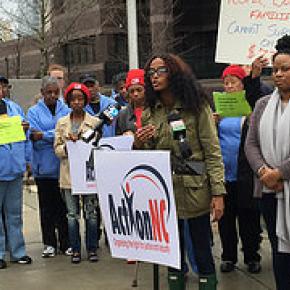
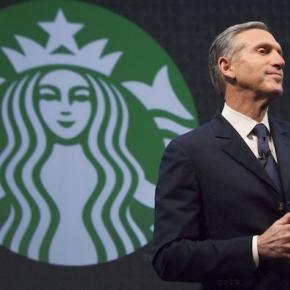
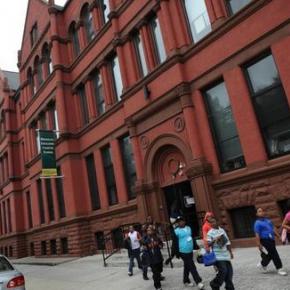
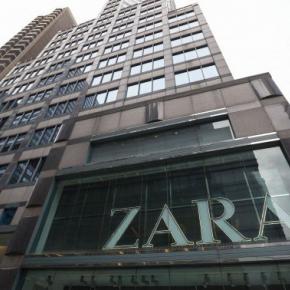
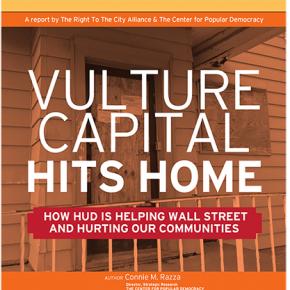


2 months ago
2 months ago